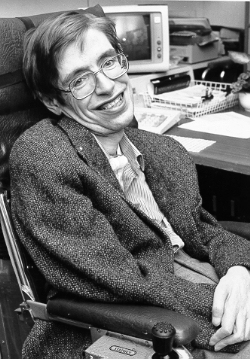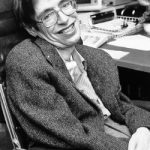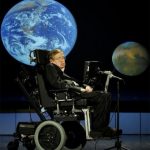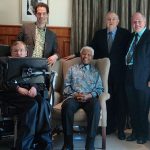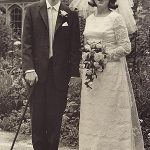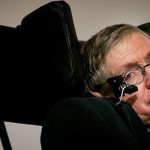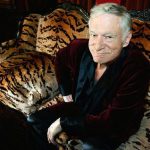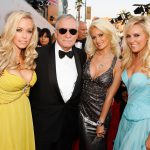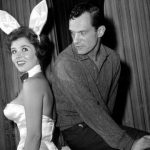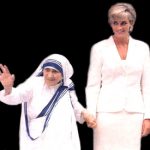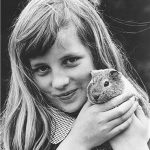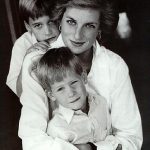Who Was Hugh Hefner?
Born on April 9, 1926, in Chicago, Illinois, Hugh Hefner transformed the adult entertainment industry with his groundbreaking publication Playboy. From the first issue featuring Marilyn Monroe in December 1953, Playboy expanded into a multimillion-dollar enterprise mirroring the often controversial sensibilities of its founder. By the 1970s, Hefner set himself up at the Playboy Mansion West in California, remaining editor-in-chief of the magazine he founded. In more recent years he starred in the reality TV series The Girls Next Door.
Background and Early Life
Hugh Marston Hefner, born on April 9, 1926, in Chicago, Illinois, was the eldest of two sons born to Grace and Glenn Hefner, who were strict Methodists. Hefner went to Sayre Elementary School and then to Steinmetz High School, where, reportedly, his IQ was 152 though his academic performance was generally modest. While in high school, Hefner became president of the student council and founded a school newspaper—an early sign of his journalistic talents. He also created a comic book entitled School Daze, in which the generally reticent youngster was able to be at the center of his own imagined universe.
Hefner served two years in the U.S. Army as a noncombatant toward the end of World War II, and was discharged in 1946. He studied at the Chicago Art Institute for a summer before enrolling at the University of Illinois at Urbana-Champaign, where he majored in psychology. Hefner earned his bachelor’s degree in 1949, the same year he married his first wife, Mildred Williams. He later did a semester of graduate school work in the area of sociology, focusing on the sex research institute established by Alfred Kinsey.
By the early 1950s, Hefner had landed a copy-writing job at the Chicago office of Esquire magazine, which featured literary works by such writers as Ernest Hemingway and F. Scott Fitzgerald as well as illustrations from pinup artists like George Petty and Alberto Vargas. Hefner opted not to remain with the publication, which moved to New York, when he was denied a $5 raise.
Starting ‘Playboy’
Out on his own, Hefner was determined to start his own publication. He raised $8,000 from 45 investors—including $2,000 from his mother and brother Keith combined—to launch Playboy magazine. Hefner had planned to title the magazine “Stag Party” but was forced to change the name to avoid a trademark infringement with the existing Stag magazine. A colleague suggested the name “Playboy,” after a defunct automobile company. Hefner liked the name, as he thought it reflected high living and sophistication.
Hefner produced the first edition of Playboy out of his South Side home. It hit newsstands in December 1953, but did not carry a date because Hefner was unsure as to whether or not a second issue would be produced. To help ensure its success, Hefner had purchased a color photograph of actress Marilyn Monroe in the nude—which had been taken some years earlier—and placed it in the centerfold of the magazine. The first issue quickly sold more than 50,000 copies, and became an instant sensation.
America in the 1950s was attempting to distance itself from nearly 30 years of war and economic depression. For many, the magazine proved to be a welcome antidote to the sexual repression of the era. For those who initially dismissed the magazine as a pornographic publication, Playboy soon broadened its circulation with thoughtful articles and an urbane presentation.
Developing a Voice
The Playboy logo, depicting the stylized profile of a rabbit wearing a tuxedo bow tie, appeared in the second issue and remained the trademark icon of the brand. Hefner chose the rabbit for its “humorous sexual connotation” and because the image was “frisky and playful”—an image he fostered in the magazine’s articles and cartoons. Hefner wanted to distinguish his magazine from most other men’s periodicals, which catered to outdoorsmen and showcased he-man fiction. Hefner decided his magazine would instead cater to the cosmopolitan, intellectual male and feature more overt sexual imagery.
In a series of 25 editorial installments presented during the 1960s, Hefner promoted what became known as the “Playboy Philosophy.” An evolving manifesto on politics and governance, the philosophy espoused Hefner’s fundamental beliefs about free enterprise and the nature of man and woman, calling for what he viewed as reasoned discourse on the truths of human sexuality. However, Hefner never lost sight of the fact that it was pictures of nude women which ultimately sold the magazine.
Work on the publication consumed much of Hefner’s life and marriage. By the late ’50s, Playboy‘s circulation had surpassed that of rival magazine Esquire, with sales reaching a million copies a month. But personal issues loomed. Hefner and his first wife divorced in 1959 after having had two children, Christie and David. As a single man, Hefner had many girlfriends and became known for his romantic, unpretentious presence. Yet he also earned a reputation for being controlling and trying to enforce double standards.
The Golden Age
In the 1960s, Hugh Hefner became the persona of Playboy: the urbane sophisticate in the silk smoking jacket with pipe in hand. He adopted a wide range of pursuits and socialized with the famous and wealthy, always in the company of young, beautiful women. As the magazine’s increased success came to the attention of the mainstream public, Hefner was happy to portray himself as the charismatic icon and spokesperson for the sexual revolution of the ’60s.
This was also Playboy‘s golden age as ever-increasing circulation allowed Hefner to build a vast enterprise of “private key” clubs that, among other traits, were racially inclusive in a time where segregation was still legally enforced. (A documentary on Hefner that focused on his civil rights activism later received a NAACP Image Award nod.) Hostesses, known as Playboy Bunnies for their scanty outfits made up of rabbit ears and puffy tails, staffed these high-end establishments. The Bunnies often did quite well financially via tips and were directed to keep a certain professional distance from ordinary patrons. The women also had strict conditions placed on them in regards to appearance, including size.
Over the years, Hefner’s Playboy Enterprises also built hotel resorts, started modeling agencies and operated a number of media endeavors. Hefner hosted two short-run television series, Playboy’s Penthouse (1959–60), which featured the likes of Ella Fitzgerald, Nina Simone and Tony Bennett, and Playboy After Dark (1969–70), with guests like Milton Berle and James Brown. Both programs were weekly talk shows set in a bachelor pad full of Playboy Playmates, who chatted with Hefner and his special guests about various subjects.
The publication itself began to garner a reputation for serious journalism, as author Alex Haley launched the “Playboy Interview” in 1962 with jazz great Miles Davis. But Hefner’s success didn’t come without controversy. In 1963, he was arrested and stood trial for selling obscene literature after an issue of Playboy featured nude photos of Hollywood actress Jayne Mansfield. The jury couldn’t reach a verdict, and the charge was eventually dropped. The publicity didn’t affect the reputation of Hefner or Playboy Enterprises. In 1964, Hefner founded the Playboy Foundation to support endeavors related to fighting censorship and researching human sexuality.
Challenges and Downsizing
By 1971, Hefner had built Playboy Enterprises into a major corporation. The company went public, and the magazine’s circulation hit 7 million copies a month, earning a $12 million profit in 1972. Hefner also began dividing his time between two large mansions, one in Chicago and the other in the Holmby Hills area of Los Angeles. When he wasn’t home, he was globetrotting in the Big Bunny, a converted black DC-30 jet complete with a living room, a disco, movie and video equipment, a wet bar and sleeping quarters. The jet also featured a circular bed for Hefner himself.
In the mid-1970s, however, Playboy Enterprises fell on hard times. The United States hit a recession, and Playboy faced increasing competition from more explicit men’s magazines such as Penthouse, helmed by rival Bob Guccione. At first, Hefner responded by presenting more revealing photos of women in less wholesome poses and circumstances. Some advertisers rebelled, and circulation fell even further. From then on, Hefner concentrated the company’s operations on magazine publishing. Playboy Enterprises eventually divested itself from its unprofitable clubs and hotels and downsized its ancillary media endeavors. The magazine kept its new photography standards and began presenting features like “Girls of the Big Ten.”
Over the years a range of female celebrities have appeared in Playboy, including Madonna, Kate Moss, Jenny McCarthy, Naomi Campbell, Cindy Crawford, Drew Barrymore, Nancy Sinatra and, appearing on the most covers, Pamela Anderson. However, the magazine has also been targeted by critics who take issue with its objectification of women and barely veiled emphasis on commercialism. Feminist icon Gloria Steinem famously went undercover as a bunny waitress in 1963 to showcase what female workers endured for a two-part Show magazine article. (Steinem’s exposé was later made into a 1985 TV movie starring Kirstie Alley.)
In 1975, Hefner decided to make Los Angeles his permanent home so he could more closely supervise his interests in television and film production. He became involved in the restoration of the famed Hollywood sign and was honored with a star on the Hollywood Walk of Fame. And in 1978 he started the Playboy Jazz Festival, an annual event featuring some of the best jazz musicians in the world.
Transitions and Other Projects
In 1985, Hefner suffered a minor stroke, with the entrepreneur blaming it on stress from director Peter Bogdanovich’s book The Killing of the Unicorn: Dorothy Stratten 1960-1980, which profiled the life and murder of a former Playmate. The stroke served as a wake-up call for Hefner. He stopped smoking, began to work out and adopted a slower pace in his pleasurable pursuits. He married his longtime girlfriend, Kimberly Conrad, in 1989, and for a time, the Playboy Mansion reflected an atmosphere of family life. The marriage produced two sons, Marston and Cooper. The Hefners separated in 1998 and officially divorced in 2009. After the separation, Kimberly and the two boys lived on an estate next door to the Playboy Mansion.
In 1988, Hefner turned over control of Playboy Enterprises to his daughter Christie, naming her chair and chief executive officer. She played a key role in directing Playboy’s ventures in cable television, video production and online programming, with Hugh continuing to serve as the magazine’s editor-in-chief. Christie Hefner stepped down from her position in January 2009.
While the magazine saw more modest sales in a changing publishing landscape, the Playboy brand remained a formidable entity in terms of global licensing opportunities. The famed logo also made inroads into various avenues of pop culture, as seen with its display on a chain regularly worn by fashionista Carrie Bradshaw (Sarah Jessica Parker) in Sex and the City.
In his later years, Hugh Hefner devoted much of his time to philanthropy and civic projects. He directed his foundation in 1993 to launch the annual Freedom of Expression Award at the Sundance Film Festival. Hefner also gave the University of Southern California $100,000 for its “Censorship in the Cinema” course, and went on to donate $2 million to its film school in 2007. Additionally, he made major contributions to the restoration of classic films, one of his great passions.
‘The Girls Next Door’
Hefner received numerous awards for his contributions to society and the publishing industry. He was inducted into the Hall of Fame of the American Society of Magazine Editors in 1998, which, ironically, was the same year Steinem earned induction. In the new millennium, he received the Henry Johnson Fisher Award and became an honorary member of TheHarvard Lampoon.
2005 saw the premiere of The Girls Next Door, a reality series focusing on the lives of Hefner and his girlfriends at the Playboy Mansion, on the E! cable television network. The show’s earlier seasons featured Holly Madison, Bridget Marquardt and Kendra Wilkinson, with later seasons featuring twins Kristina and Karissa Shannon and Crystal Harris, who would later become engaged to Hefner. True to form, the series served as a promotional vehicle for many of Hefner’s projects.
The 2009 season finale of Girls Next Door chronicled more changes in Hefner’s life, as Marquardt left the mansion and began her own TV series. Wilkinson left soon after, pursuing a relationship with NFL player Hank Baskett. Madison also vacated the mansion. She later penned the 2015 memoir Down the Rabbit Hole, detailing Hefner’s off-camera machinations and the severe unhappiness she experienced living at the mansion.
Third Marriage and Rebranding
Hefner reportedly was in discussions with Hollywood studio executives for many years to create a biopic about his life. Director Brett Ratner was linked to the film at one point, with several major stars named as prospects for the lead role, including Tom Cruise, Leonardo DiCaprio and Robert Downey Jr.
Hefner and Harris became engaged in December 2010. Not long after, in June 2011, the couple made headlines when Harris called off the engagement. Hefner and Harris were then back in the public eye in 2012, after announcing their re-engagement. The couple tied the knot at a Playboy Mansion ceremony on New Year’s Eve in 2012. After the ceremony, 86-year-old Hefner tweeted: “Happy New Year from Mr. and Mrs. Hugh Hefner,” with a photo of himself and his 26-year-old bride.
Meanwhile, Playboy was set to undergo a transformation: In October 2015, chief content officer Cory Jones revealed to the New York Times that he and Hefner had agreed to stop using photos of fully unclothed women. The change was part of a strategic decision to secure more advertisers and better placement on newsstands, as well as a response to the proliferation of internet pornography that had made the magazine’s spreads seem old-fashioned. The March 2016 issue featured bikini-clad model Sarah McDaniel on the cover, the first time Playboy presented itself as a non-nude magazine.
However, the change was short lived. Not long after Hefner’s son Cooper took over as chief creative officer in 2016, it was announced that Playboy would again feature unclothed models. “Nudity was never the problem because nudity isn’t a problem,” the creative chief tweeted in February 2017. “Today we’re taking our identity back and reclaiming who we are.”
Cooper Hefner had also voiced his displeasure with the Playboy Mansion going up for sale, though he was unable to have his way on that issue. In the summer of 2016, it was announced that the mansion had been sold for $100 million to a neighbor, under the agreement that Hefner and his wife would continue living there until his death.
Death
Hefner died on September 27, 2017, at his home, the Playboy Mansion, in Holmby Hills, California. He was 91. “Hugh M. Hefner, the American icon who in 1953 introduced the world to Playboy magazine and built the company into one of the most recognizable American global brands in history, peacefully passed away today from natural causes at his home, The Playboy Mansion, surrounded by loved ones,” Playboy Enterprises confirmed in a statement. “He was 91 years old.”
Hefner bought the mausoleum drawer next to Marilyn Monroe in Westwood Memorial Park in Los Angeles, where he will be buried.
